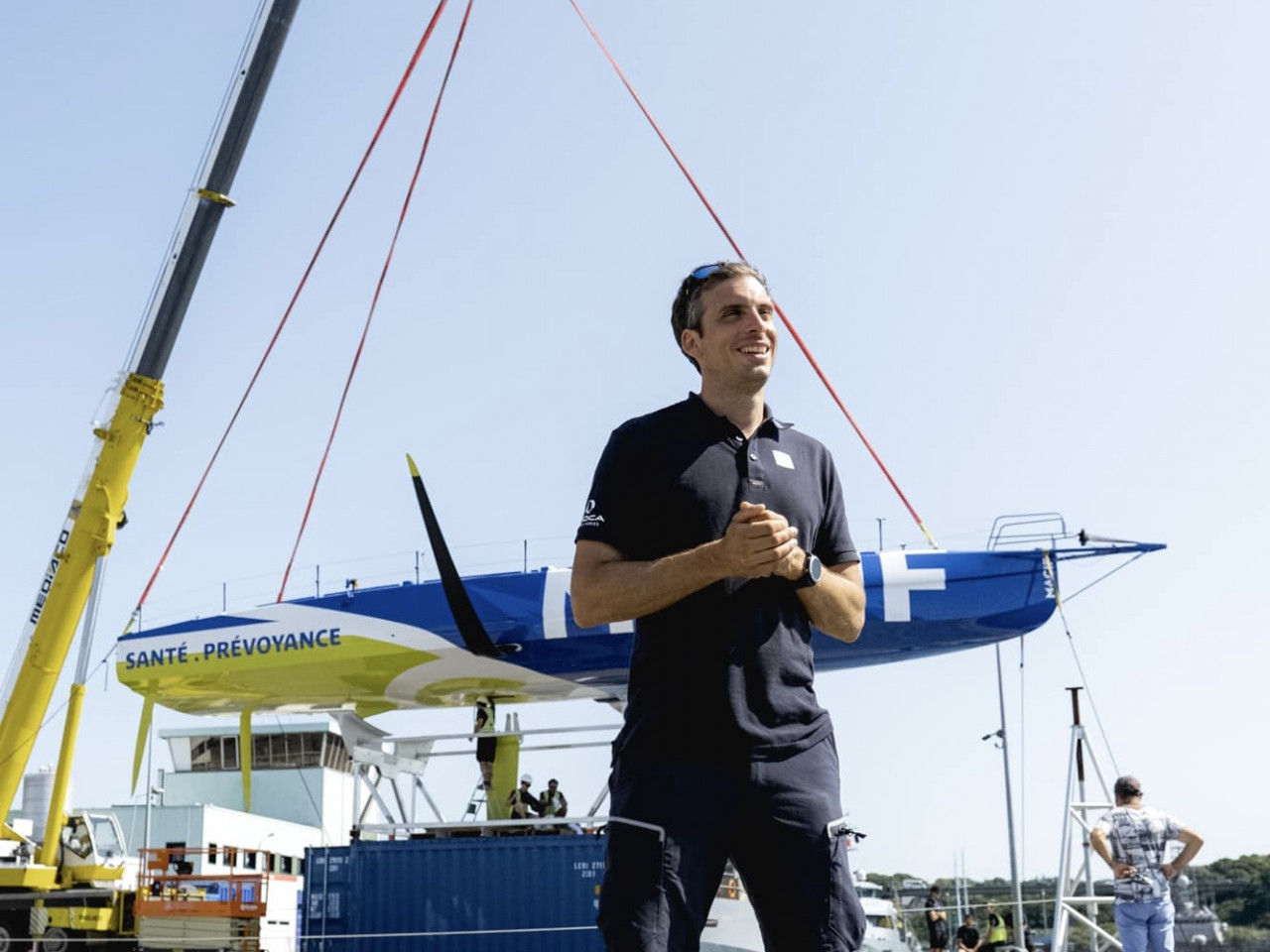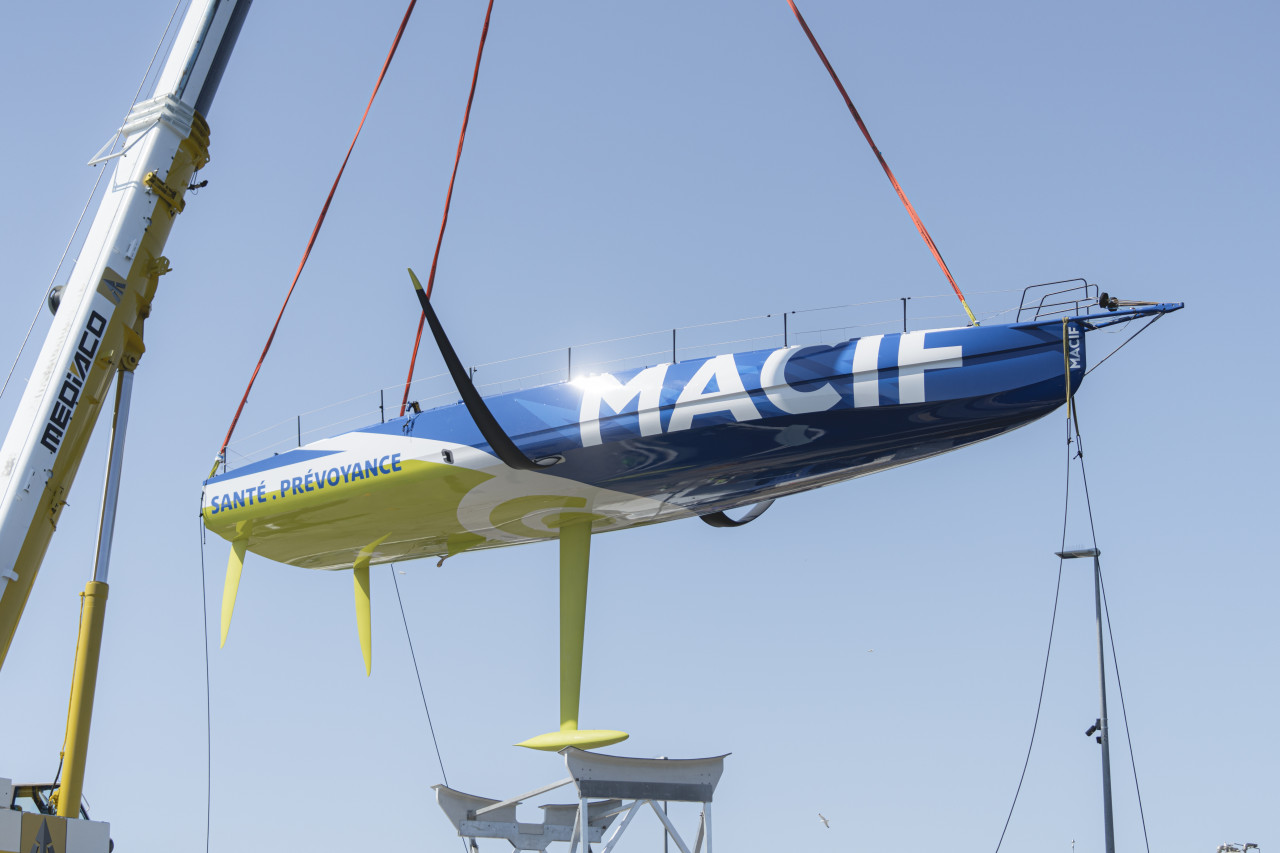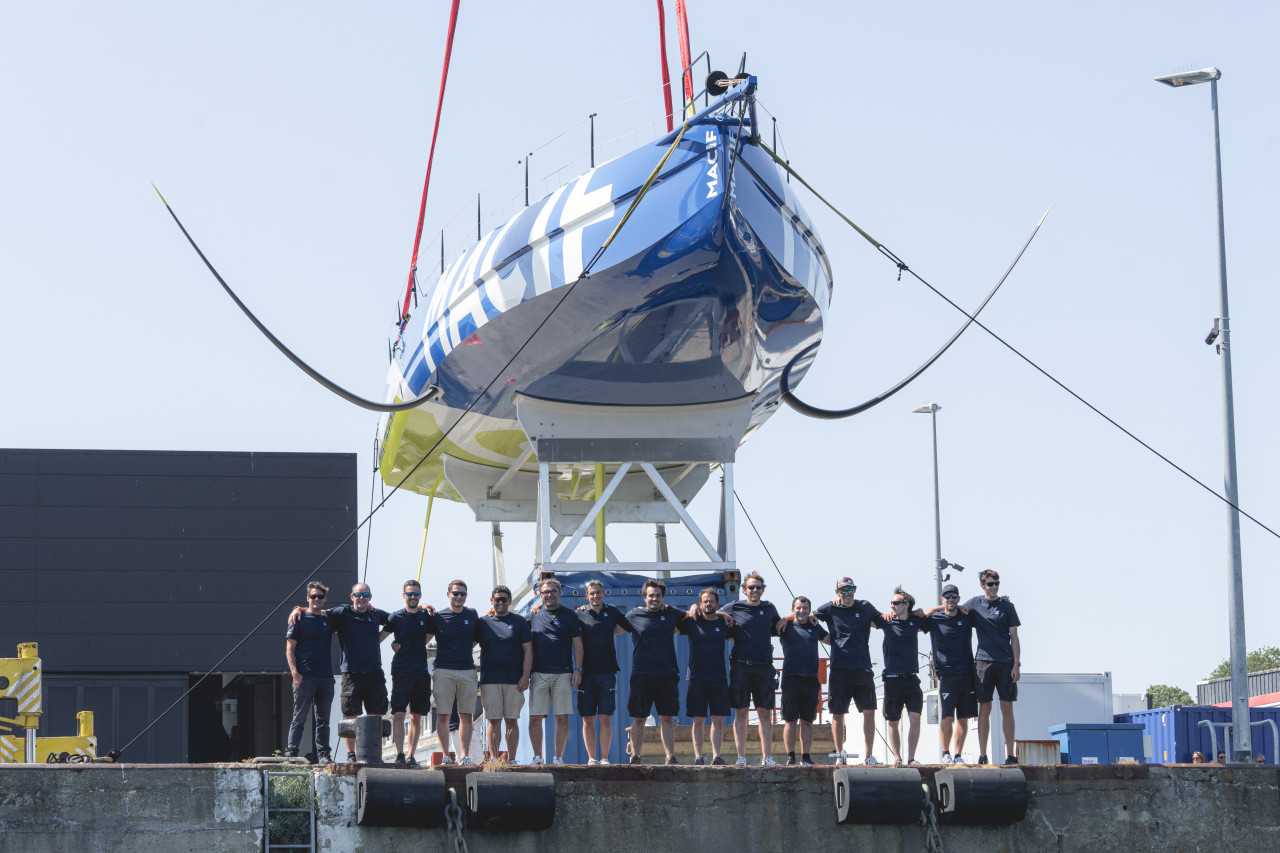Charlie Dalin’s new boat: The small steps to super-competitive performance

It’s not hard to imagine the pressure when it comes to designing and building a new IMOCA for Charlie Dalin. It’s not just about producing a boat that is faster than his main rivals at the top of the IMOCA fleet, it’s also about creating something that is better than Dalin’s old boat in which he enjoyed a spectacular run of success.
The team that has taken up this challenge for the two-time IMOCA Globe Series Champion and line honours finisher in the last Vendée Globe, is once again led by superstar French naval architect Guillaume Verdier alongside project management by MerConcept and construction by CDK Technologies in Port-la-Forêt.
The technical manager for the project – the new boat is called Macif-Santé Prévoyance and was launched for the first time in Concarneau on Saturday – is MerConcept’s Guillaume Combescure. He admits the old boat, Apivia, is an unavoidable performance reference.
“Yeah, with Apivia we can’t do worse – we have to do better, but it’s not a pressure,” he told the Class. “The mood is more to consider that we are starting again with loops of development and improvement and analysis. For sure, Charlie was one of the leaders in IMOCA last season, but we do have a margin of progression.”
Combescure says Dalin is the ideal skipper to work with on a new boat that the skipper originally from Le Havre hopes will take him to outright victory at his second attempt at the Vendée Globe next year. “It has been really exciting and interesting because Charlie is a naval architect and he was really involved in the design. He was always thinking about the issues we were trying to solve and coming up with a different angle of approach or a new idea and always being consistent. He knows how to trust the guys too, so he was really involved and present but also listening to us and the whole team, so Charlie has the perfect balance.”
 © Maxime Horlaville - Agence Disobey - Macif
© Maxime Horlaville - Agence Disobey - Macif
At this stage in the evolution of the Class rule, and the relative maturity of the latest designs, Combescure argues there is no magic bullet when it comes to new boats and instead design and build teams are looking for a series of marginal gains. “From my point of view – and maybe this is not shared – you cannot make a big step,”he explained. “That’s what makes the job difficult. You have to make little steps in all the axes of development. That’s the difficult part – you cannot achieve a revolution.”
With this boat, the small steps include the hull profile, which further emphasises volume at the bow, and the foil profiles which are designed to optimise performance at all wind angles. “The hull shape is obviously different and follows the evolution of having more volume at the bow, but keeping some power in the hull. With the foils we are trying to win downwind without losing too much power when reaching and going upwind,” Combescure summarised.
The other main area of work has been the development of a protected centerline cockpit with the living and navigation area just behind it, not ahead of it. “The point of it was that Charlie wanted to have a central living area and not have to change position with each tack or each gybe. That was the first thing. Then we had to improve the transfer between the cockpit and the living area so he can relax or do the navigation at the computer at the seat without being completely out of the cockpit. We had two choices – living area in front of the cockpit or behind it – and we went with behind, so we could keep a central cockpit. It’s really compact with only one winch pod.”
 © Maxime Horlaville - Agence Disobey - Macif
© Maxime Horlaville - Agence Disobey - Macif
When it comes to overall levels of comfort though, Combescure accepts that the new MACIF Santé Prévoyance is going to be another rough ride for its mild-mannered but super-competitive 39-year-old skipper. “Honestly, I think it’s going to be the same as the other boats when it comes to comfort…the boat is going to be as savage as the others,” said Combescure. “But we are really confident that the evolution of the hull and the foils – but mainly the hull – will give the boat more volume and be more sea-kindly. I’m not sure it will be kind for Charlie but the boat will ride the waves and not dig in…”
Combescure says there is plenty of scope for further performance improvement under the current Class rule, even if a massive step in one go is unlikely. “We always have the feeling that we have reached the limit and the optimal interpretation of the rule, but time passes and the generation that follows finds some improvement,” he said. “Even if the rule doesn’t change, progress will keep on-going and I don’t think we will ever find the optimum – there will always be some margin for improvement.”
And overall, is he happy that they have met the challenge of producing a boat for one of the top skippers in the Class? “Yes, we are hopeful,”said Combescure. “We have done everything we can to be faster than the others. It doesn’t mean we will be, but it is clearly everyone’s objective and goal.”
Ed Gorman
Teams info
THE LIST OF 40 SKIPPERS UNVEILED
The 2020 edition of the Vendée Globe has generated unprecedented interest. As a result, the organisers decided to increase the number of places at the start to 40 for the 2024 edition. 44 skippers applied for this 10th e…
•••Charlie Dalin: The podium in IMOCA is much harder to reach now
Charlie Dalin has particularly enjoyed his convincing win in the New York Vendée-Les Sables d’Olonne race. And that’s partly because he knows that even getting on the podium in the IMOCA Class is becoming more difficult.
•••